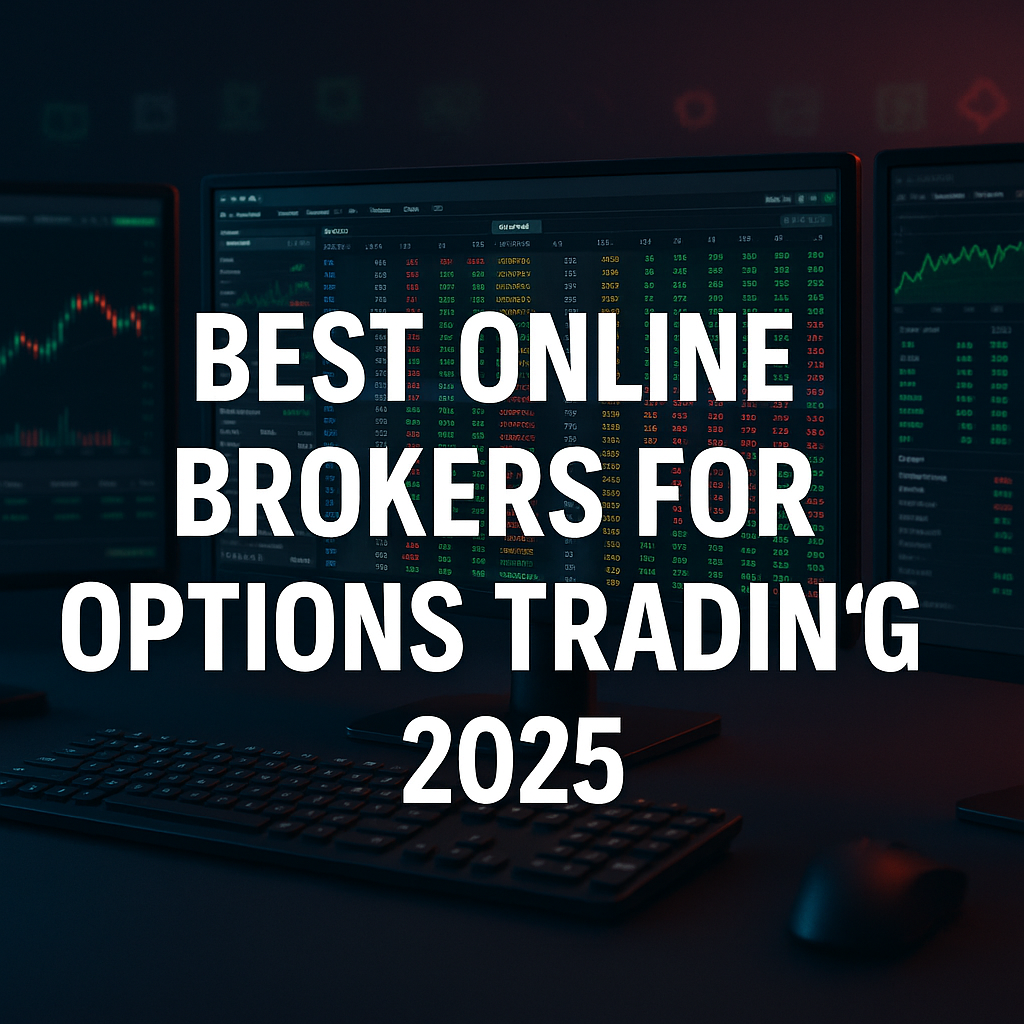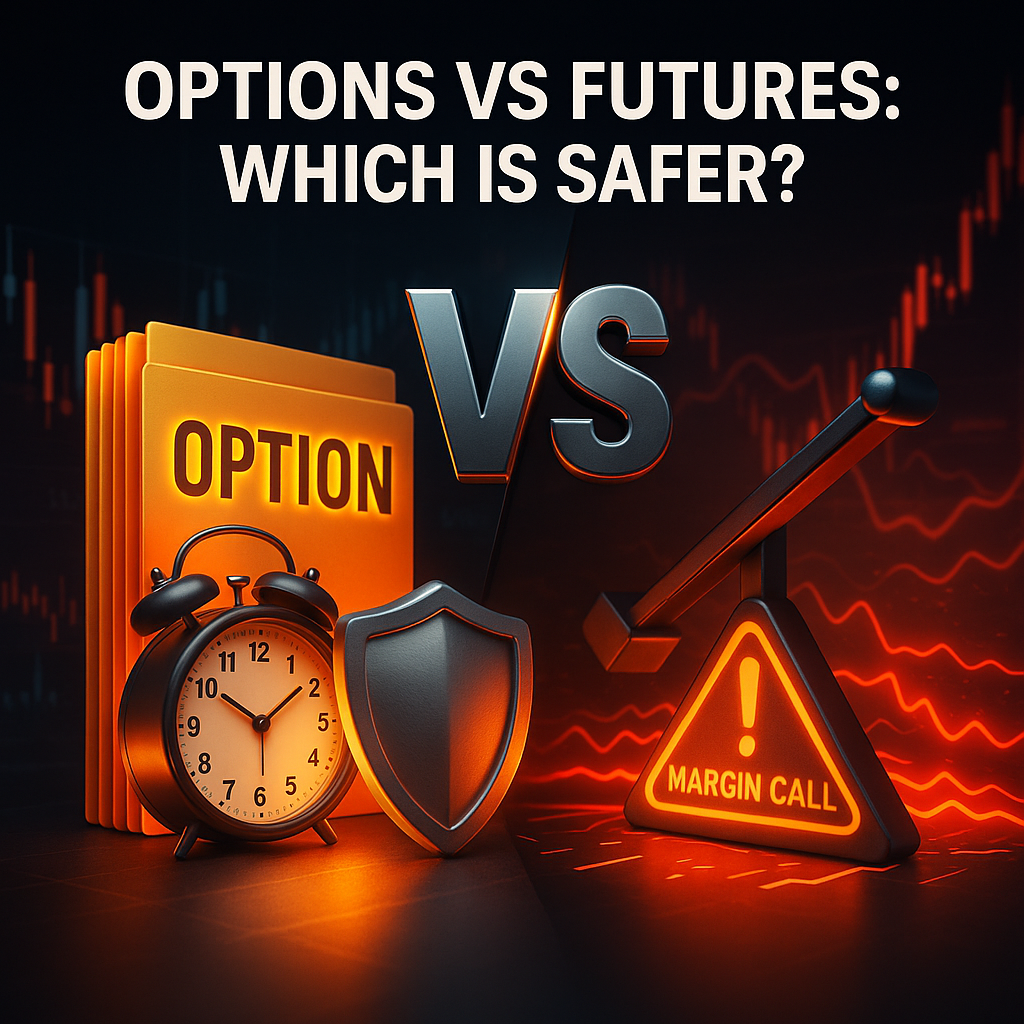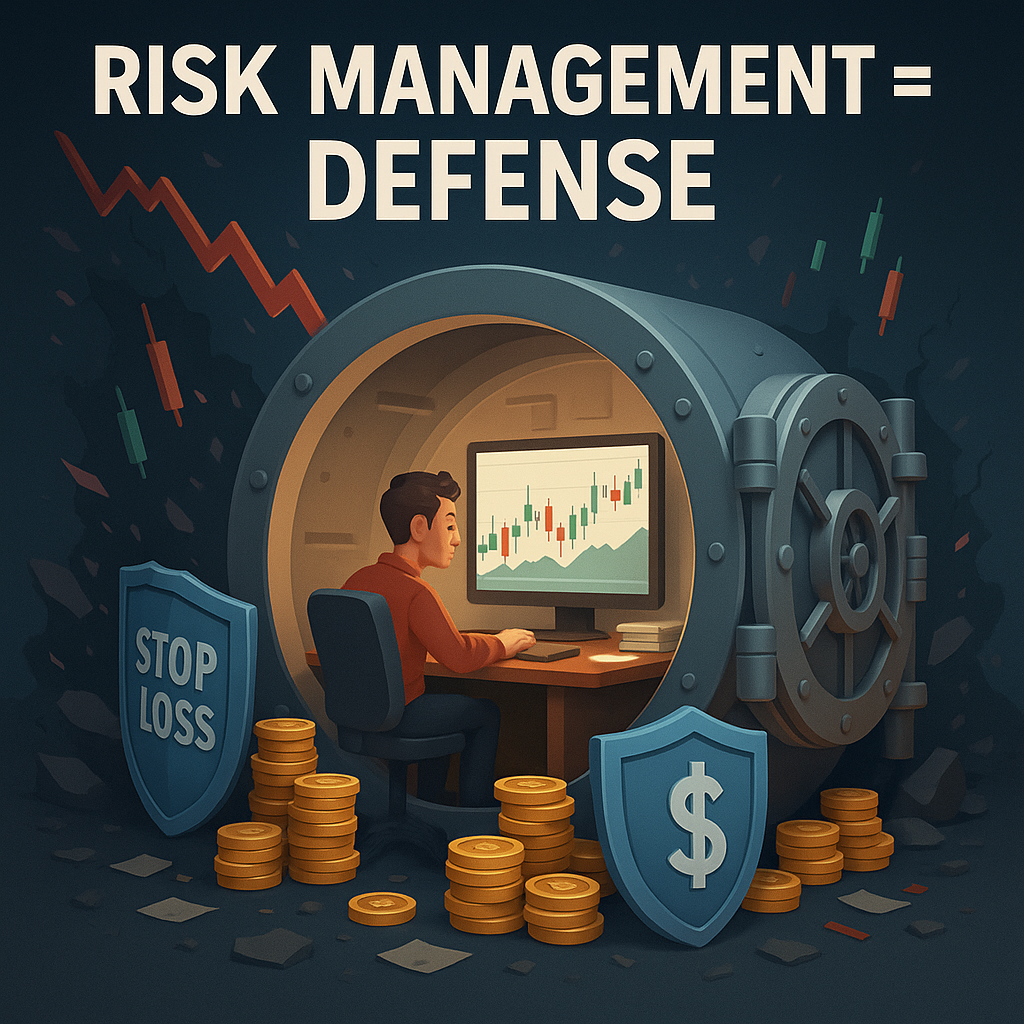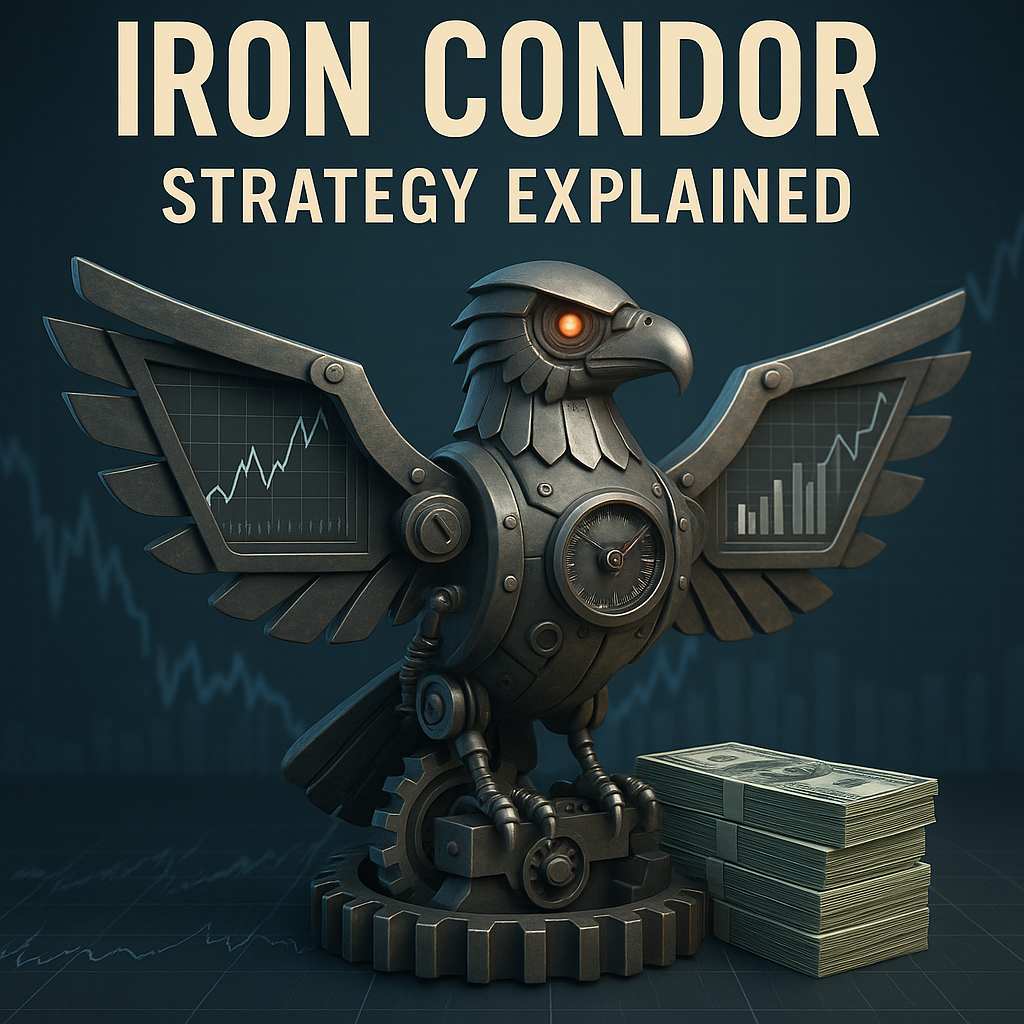I’ve blown up accounts at seven different brokers. Not because I’m proud of it, but because I’m apparently a masochist who needs to test every platform personally before believing the reviews. Over the past six years, I’ve traded options on TD Ameritrade, E*TRADE, Robinhood, Tastyworks, Interactive Brokers, Webull, and Fidelity. I’ve paid thousands in unnecessary commissions, been screwed by bad fills, and rage-quit platforms because their mobile apps crashed during crucial trades.
So when I tell you which brokers are actually good for options trading in 2025, I’m not regurgitating some sponsored blog post. I’m telling you from experience – including the time Robinhood’s servers crashed during the COVID selloff and cost me $15,000, or when Interactive Brokers saved my ass with their risk management tools that stopped me from doing something catastrophically stupid.
Here’s the truth nobody wants to admit: the “best” broker depends entirely on what kind of trader you are. A platform that’s perfect for selling covered calls might be terrible for day trading 0DTE options. The broker your friend swears by might make you want to throw your laptop out the window. So I’m going to break this down by trading style, experience level, and what actually matters when real money is on the line.
The Big Players: Who’s Actually Worth Your Time
TD Ameritrade / Charles Schwab (They Merged, It’s Complicated)
The Platform: thinkorswim (TOS)
Commission: $0.65 per contract
Account Minimum: $0
Options Levels: Easy to get Level 2, harder for spreads
Let me start with the elephant in the room – thinkorswim. This platform is like driving a Ferrari when everyone else is in a Honda Civic. It’s so good that when Schwab bought TD Ameritrade, the first thing they said was “we’re keeping thinkorswim.”
What Makes TOS Amazing:
- The options chain is absolutely perfect – I can see everything I need in one screen
- OnDemand feature lets you replay past market days (practice with real historical data)
- Risk analysis tools that have literally saved me from bankruptcy
- Custom studies and strategies that make you feel like a quant trader
- Paper trading that uses real market data
Real Experience: I use TOS for all my complex options strategies. Last month, I was setting up an iron condor on SPX, and the analyze tab showed me I was risking $5,000 to make $500. Looked good until I modeled a 10% market drop – would’ve lost everything. Adjusted my strikes, reduced risk to $2,000, still made $400. That tool alone has saved me probably $50,000 over the years.
The Downsides:
- $0.65 per contract adds up (I paid $1,300 in commissions last year)
- Platform has a learning curve steeper than Everest
- Mobile app is powerful but clunky
- Customer service went to shit after the Schwab merger
- Sometimes laggy during high volume
Who Should Use It: Serious options traders who value tools over saving $0.65. If you’re doing spreads, butterflies, or any complex strategies, TOS is worth every penny.
Robinhood (The Gateway Drug)
The Platform: Mobile-first simplicity
Commission: $0 per contract
Account Minimum: $0
Options Levels: Surprisingly easy to get Level 3
I have a love-hate relationship with Robinhood. Mostly hate, but I can’t deny they revolutionized options trading for retail traders. They’re the reason everyone else dropped commissions.
What Robinhood Does Well:
- Completely free options trading (this is huge for small accounts)
- Stupidly simple interface that your grandma could use
- Instant deposits up to $1,000
- Fractional shares (not options, but useful)
- Actually good at getting you approved for spreads
My Robinhood Horror Story: March 2020, trying to close my SPY puts during the crash. App crashes. Web platform crashes. Can’t get through to support (because they don’t have phone support). By the time I could trade, my $20,000 profit turned into $5,000. I literally threw my phone against the wall.
Current Reality: They’ve improved significantly. Servers are more stable, they added more features, and the web platform is decent now. I keep $2,000 there for quick trades because I’m not paying commission on small positions.
The Major Problems:
- No real analysis tools (you’re flying blind)
- Terrible fills on options (that “free” commission costs you in spread)
- Customer service is still basically non-existent
- Payment for order flow means you’re the product
- No complex options strategies beyond basic spreads
Who Should Use It: Beginners with less than $5,000 who want to learn without commissions eating them alive. Also good for a secondary account for small YOLO trades.
Tastyworks (Built By Options Traders, For Options Traders)
The Platform: Desktop and mobile
Commission: $1 per contract, capped at $10 per leg
Account Minimum: $0
Options Levels: Very easy to get approved for everything
Tom Sosnoff built this after creating thinkorswim, specifically for options traders. It shows.
Why Tastyworks is Incredible:
- Commission caps at $10 per leg (I can trade 100 contracts for $10)
- The probability-based approach to everything
- Curve mode shows your P&L visually
- Closing trades under $0.05 is free (huge for sellers)
- Best mobile app for options, period
- They WANT you to trade spreads
Personal Experience: I moved my theta gang account here. Sell 50 iron condors on SPX? $10 commission instead of $65 on TOS. Close them for $0.04? Free. I’ve saved over $3,000 in commissions this year alone.
The Weird Stuff:
- Interface looks like it’s from 2010
- No banking features (can’t even deposit checks)
- Research tools are basically non-existent
- Stock trading feels like an afterthought
- Small company vibes (could be good or bad)
Who Should Use It: Active options sellers who trade size. If you’re doing 50+ contracts per trade or running the wheel strategy on multiple positions, the commission savings are massive.
Interactive Brokers (IBKR) – The Professional’s Choice
The Platform: Trader Workstation (TWS)
Commission: $0.65 per contract (or $0.25 with volume)
Account Minimum: $0
Options Levels: Need to prove you know what you’re doing
IBKR is like flying a commercial airplane – incredibly powerful but you need actual training to use it properly.
What Makes IBKR Special:
- Lowest margin rates in the industry (6.83% right now)
- Trade options on literally everything, globally
- Portfolio margin if you qualify (6:1 leverage)
- Best execution quality I’ve experienced
- Risk management tools that are borderline obsessive
- API access for algo trading
My IBKR Story: Was overleveraged on Tesla calls using portfolio margin. Their risk system automatically started closing positions when I hit 90% margin usage. Was pissed at the time, but Tesla dropped 20% the next day. They literally saved me from bankruptcy.
The Problems:
- TWS looks like it was designed by engineers who hate humans
- Learning curve is vertical
- Customer service assumes you have a finance degree
- Mobile app is powerful but confusing
- Constant system messages that induce anxiety
Who Should Use It: Experienced traders who want professional tools and don’t mind complexity. If you’re trading with $50,000+ or want portfolio margin, IBKR is unmatched.
E*TRADE (Now Morgan Stanley)
The Platform: Power E*TRADE
Commission: $0.65 per contract ($0.50 if you trade 30+ times per quarter)
Account Minimum: $0
Options Levels: Moderate difficulty for spreads
E*TRADE is like the reliable Toyota Camry of brokers – not exciting, but it works.
What E*TRADE Does Well:
- Power E*TRADE platform is actually really good
- Great educational resources
- Excellent customer service (actual humans who know options)
- Good mobile app that doesn’t crash
- Banking integration is seamless
My Experience: Used them for two years before moving to TOS. Never had major issues, but never had “wow” moments either. Perfect for set-and-forget strategies like covered calls.
Downsides:
- Commissions add up with no cap
- Not the best for active traders
- Tools are good but not great
- Morgan Stanley acquisition made things corporate
- Options approval can be strict
Who Should Use It: Intermediate traders who want reliability over cutting-edge features. Great for retirement accounts.
Fidelity
The Platform: Active Trader Pro
Commission: $0.65 per contract
Account Minimum: $0
Options Levels: Notoriously difficult for spreads
Fidelity is your responsible older brother who works in accounting – stable, reliable, and slightly boring.
The Good:
- Rock-solid platform that never crashes
- Excellent research and educational resources
- Best customer service in the industry (they actually answer the phone)
- Great for retirement accounts
- Strong banking features
The Reality: Fidelity hates options traders. Getting approved for spreads is like applying for a mortgage. They rejected me three times before finally approving Level 3, and I had years of experience.
Personal Frustration: Tried to trade a simple call spread. Platform made it unnecessarily complicated. Mobile app treated it like I was trying to launch nuclear codes. Moved my options trading elsewhere but kept my IRA there.
Who Should Use It: Long-term investors who occasionally trade options. Not for active options traders.
Webull
The Platform: Mobile and desktop
Commission: $0 per contract
Account Minimum: $0
Options Levels: Pretty easy approval
Webull is Robinhood’s Chinese cousin who studied harder.
What’s Good:
- Free options trading
- Better tools than Robinhood
- Good charting for a free platform
- Paper trading available
- Extended hours trading
What’s Not:
- Chinese-owned (security concerns for some)
- Customer service is email only
- Platform crashes during volatility
- Limited options strategies
- Payment for order flow issues
My Take: I have $1,000 there for experiments. Would never put serious money there. It’s like Robinhood with better charts but worse reliability.
Specialized Platforms Worth Considering
TradeStation
Great for futures options and automated trading. Commission structure is weird. Platform is powerful but dated. Worth it if you’re coding strategies.
Firstrade
Zero commission on everything including options. Catch? The platform is basic, fills are terrible, and customer service is non-existent. You get what you pay for.
Ally Invest
Decent all-around but nothing special for options. Good if you already bank with Ally. Commission is $0.50 per contract.
How to Choose Based on Your Trading Style
For Day Trading 0DTE Options
Winner: TD Ameritrade/thinkorswim
You need real-time data, fast execution, and tools to not blow up. TOS’s Active Trader setup is perfect for rapid-fire trading. Yeah, commissions suck, but the tools will save you more than you spend.
Runner-up: Interactive Brokers – If you can handle the complexity
For Selling Premium (Theta Gang)
Winner: Tastyworks
The commission cap is huge when selling spreads. Platform is built for probability-based trading. Closing cheap positions for free adds up fast.
Runner-up: TD Ameritrade – Better tools but higher costs
For Beginners
Winner: Robinhood
I hate to admit it, but free commissions and simple interface are perfect for learning. Just don’t keep more than $5,000 there.
Runner-up: E*TRADE – Better education but costs more
For Small Accounts (Under $5,000)
Winner: Robinhood or Webull
Every dollar counts. Free commissions let you trade small without getting eaten alive. Move to a real broker when you grow the account.
For Complex Strategies
Winner: TD Ameritrade/thinkorswim
Nothing beats TOS for analyzing condors, butterflies, and custom strategies. The analyze tab alone is worth the commissions.
Runner-up: Interactive Brokers – More powerful but harder to use
For Portfolio Margin
Winner: Interactive Brokers
Lowest rates, best margin requirements. If you qualify for portfolio margin, IBKR is the only real choice.
The Hidden Costs Nobody Talks About
Payment for Order Flow
“Commission-free” brokers sell your orders to market makers. You save $0.65 but lose $2 on the spread. I tested this: same option, same time, different brokers:
- Robinhood fill: $2.45
- TD Ameritrade fill: $2.48
- Interactive Brokers fill: $2.50
That $0.05 difference on 10 contracts is $50. “Free” isn’t free.
Margin Rates
If you use margin (and you will eventually):
- Interactive Brokers: 6.83%
- TD Ameritrade: 13.25%
- Robinhood: 12.5%
- E*TRADE: 13.45%
On $50,000 margin, that’s $3,000+ difference per year.
Data Fees
Real-time options data costs extra at some brokers:
- Interactive Brokers: $4.50/month for OPRA data
- Most others: Free with funded account
Exercise and Assignment Fees
Nobody mentions these until you get hit:
- TD Ameritrade: $19.99
- Fidelity: $32.95
- Tastyworks: $5
- Robinhood: $0
Got assigned on 10 short puts at Fidelity? That’s $329.50 in fees. Ouch.
My Personal Setup (What I Actually Use)
Main Account: TD Ameritrade/thinkorswim ($150,000)
- All complex strategies
- Analysis and research
- Long-term positions
Income Account: Tastyworks ($50,000)
- Selling premium
- Iron condors and strangles
- Wheel strategy
YOLO Account: Robinhood ($5,000)
- Weekly options gambling
- Small experiments
- Meme stock ventures
IRA: Fidelity ($75,000)
- Buy and hold
- Occasional covered calls
- Safe from my degeneracy
Migration Strategy (How to Switch Without Disaster)
Step 1: Open New Account
Don’t close old one yet. Trade parallel for a month.
Step 2: Test Everything
- Place small trades
- Test deposits/withdrawals
- Check mobile app
- Verify tools work
Step 3: Gradual Migration
Move 25% of capital first. If happy after a month, move rest.
Step 4: ACATS Transfer
Use ACATS to move positions without selling. Takes 5-7 days. Don’t trade during transfer.
Warning About Transfers
I tried to transfer during the GME squeeze. Transfer locked my account for a week. Missed massive gains. Never transfer during volatility.
The Broker Red Flags to Avoid
- No Phone Support – When shit hits the fan, you need a human
- Restricted Options Levels – If they won’t approve you for spreads, leave
- Hidden Fees – Read the fee schedule entirely
- Bad Mobile App – You’ll need it eventually
- Sketchy Ownership – If you don’t trust them with your SSN, don’t trust them with your money
Platform-Specific Tips That Will Save You Money
TD Ameritrade
- Negotiate commissions if you trade volume (I got mine to $0.50)
- Use conditional orders to automate strategies
- OnDemand for backtesting strategies
Robinhood
- Always use limit orders (market orders get terrible fills)
- Don’t trade the first minute of market open (spreads are wide)
- Gold membership worth it for instant deposits
Tastyworks
- Close positions under $0.05 for free
- Use their “clone” feature for repeated strategies
- Watch their free daily show for ideas
Interactive Brokers
- Use IBKR Lite for free trades if you don’t need pro features
- Set up alerts for margin calls
- Use their API for automation
The Bottom Line: My Recommendations
If you’re starting out: Robinhood to learn, then graduate to real platforms
If you’re serious about options: TD Ameritrade/thinkorswim despite the commissions
If you sell premium: Tastyworks for the commission caps
If you want the best execution: Interactive Brokers if you can handle complexity
If you want reliability: E*TRADE or Fidelity for that corporate stability
If you’re broke: Robinhood or Webull, but be careful
Look, no broker is perfect. I’ve been screwed by all of them in different ways. But TD Ameritrade has made me the most money through better analysis, Tastyworks has saved me the most on commissions, and Interactive Brokers has prevented the biggest disasters.
Choose based on your actual needs, not what some YouTube guru recommends. And for the love of all that’s holy, don’t put all your money in one broker. When (not if) their platform crashes during the next market meltdown, you’ll thank me for having a backup.
Start with one, learn its strengths and weaknesses, then expand. The best traders I know use multiple brokers for different strategies. The worst traders I know keep switching platforms looking for magic. The magic isn’t in the platform – it’s in your strategy and discipline. The platform just needs to not get in your way.



